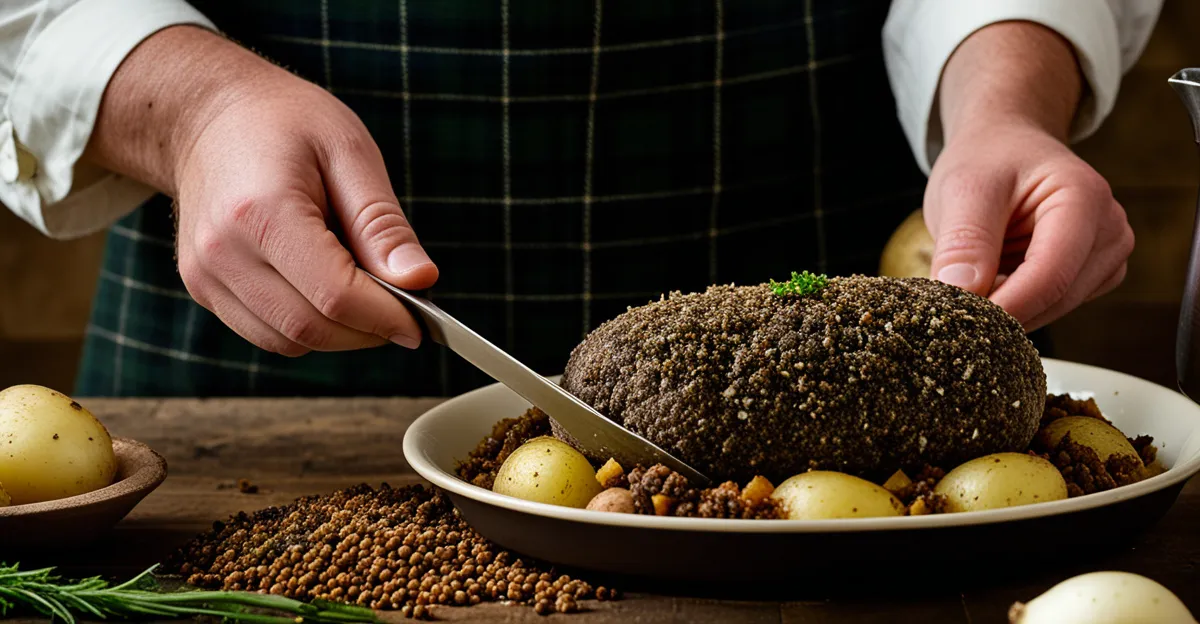Sourcing Ingredients for Traditional Scottish Haggis
When sourcing traditional Scottish haggis ingredients, authenticity and quality are key to an excellent meal. Genuine haggis is typically available at specialty Scottish delis or butcher shops. For those considering alternatives, pre-packaged haggis found in well-stocked supermarkets can provide convenience without sacrificing much authenticity. Homemade haggis offers the most control over flavor, but requires sourcing specific offal cuts and traditional seasonings.
Selecting the best neeps and tatties supplies is equally important. “Neeps” refers to swede or turnips, ideally firm and bright in color with a sweet, earthy flavor. “Tatties,” or potatoes, should be starchy varieties like Maris Piper or King Edward for the smoothest mash. Freshness is crucial, as blemished or waxy potatoes detract from the dish’s characteristic texture.
Also to see : How do you achieve the perfect texture in a Cornish pasty?
Don’t overlook essential seasonings like ground black pepper, mace, and nutmeg, which are vital to the traditional Scottish haggis flavor profile. A simple accompaniment of salted butter for neeps and tatties rounds out the meal, enhancing both flavor and authenticity. Together, these carefully sourced ingredients form the foundation of a classic haggis feast.
Step-by-Step Guide to Preparing Haggis
Preparing haggis traditionally involves careful attention to both technique and timing. When preparing haggis at home, the first step usually is to soak the sheep’s stomach in cold water, rinsing it thoroughly. Then, the traditional Scottish haggis recipe calls for mixing the offal—typically liver, heart, and lungs—with suet, oats, onions, and spices. This mixture is packed tightly into the stomach casing before securely stitching it closed.
This might interest you : How can you prepare a comforting bubble and squeak at home?
How to cook haggis demands a gentle simmering process. Place the stuffed stomach in boiling water for about 3 hours, turning occasionally to ensure even cooking. Avoid boiling vigorously, as this can cause the casing to burst. For pre-made haggis, cooking instructions usually recommend similar simmering, or alternatively, oven baking or microwaving for convenience.
Achieving authentic flavour depends on the right balance of spices—black pepper, nutmeg, and mace—and the oatmeal’s toasted, nutty texture. These elements create a robust yet comforting taste, highlighting the unique character of traditional Scottish haggis. Proper cooking preserves moisture and tenderness, ensuring a satisfying texture that distinguishes haggis from other savoury puddings.
Cooking Neeps and Tatties the Scottish Way
Mastering the neeps and tatties recipe is essential for a truly traditional Scottish meal. When preparing neeps, select fresh root vegetables—typically swede or turnips—and peel them thoroughly before cutting into even-sized chunks. Boil the neeps in salted water until tender, then drain well. To achieve the ideal consistency, mash the neeps with a knob of butter and a pinch of freshly ground black pepper, which balances their natural sweetness and earthiness.
For the tatties, choose starchy potatoes such as Maris Piper or King Edward. These varieties yield smooth, creamy mash perfect for accompanying haggis. After peeling and chopping, boil the tatties until soft, drain completely, then mash with warm milk or cream and butter. It’s important to avoid over-mashing, as this can make the tatties gluey rather than fluffy.
Season both neeps and tatties simply, allowing their natural flavors to shine alongside the more robust traditional Scottish haggis. The contrast of creamy tatties and slightly firm, sweet neeps creates a harmonious base that complements the hearty, spiced haggis perfectly.
Serving and Presenting Traditional Scottish Haggis with Neeps and Tatties
Presenting traditional Scottish haggis with neeps and tatties involves more than just plating; it celebrates Scottish heritage. When serving haggis, the classic trio is arranged so that the haggis takes centre stage, sliced open or left whole, showcasing its rich, spiced filling. Surround neeps and tatties alongside the haggis—mashed neeps bring a subtle sweetness, while creamy tatties offer a comforting contrast.
Adding a knob of melted butter atop the neeps and tatties enhances moisture and flavour. Classic accompaniments include a drizzle of whisky sauce or a touch of sharp mustard, which brighten the dish and complement haggis’s hearty profile. For Burns Night or other special occasions, consider garnishing with fresh parsley or a sprig of thyme to elevate the presentation visually.
Plating should balance colour and texture—bright yellow neeps and fluffy white tatties contrast beautifully with the darker haggis. Serving on warm plates ensures the meal stays hot longer. Thoughtful serving of haggis, neeps and tatties not only respects tradition but elevates the culinary experience for guests, making each bite memorable.
Cultural Significance and History of Haggis with Neeps and Tatties
The history of haggis is deeply entwined with Scottish food culture, dating back centuries as a practical and nourishing dish made from readily available ingredients. Traditionally, it served rural communities by utilising offal combined with oats and seasonings, reflecting the resourcefulness of Scottish cooking. Haggis became emblematic of Scotland itself, gaining prominence through Robert Burns’s 1787 poem “Address to a Haggis,” solidifying its place as a symbol of national pride and identity.
Why are neeps and tatties served with haggis? This pairing balances the rich, spicy haggis with simple, earthy vegetables—swede or turnips (neeps) and creamy potatoes (tatties). The contrasting textures and flavours provide a harmonious dining experience, with neeps offering subtle sweetness and tatties bringing smooth comfort. Together, they complement the robust meatiness of haggis perfectly.
Burns Night traditions celebrate this iconic trio each January 25th, honouring Scotland’s national poet and heritage. Gatherings often include recitations, piping in the haggis, and sharing stories, underscoring how haggis, neeps, and tatties transcend food—they encapsulate Scottish identity, community, and history in every bite.









